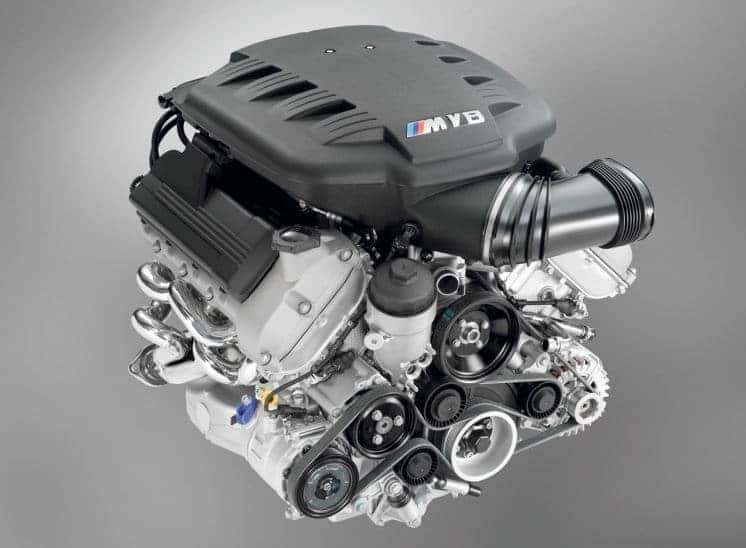Exploring the Performance Enhancements of the Latest BMW Engine Models
Introducing the Intricacies of Next-Generation Power Units: a Deep Study Advanced Engine Layouts and Technologies
As we stand on the precipice of a new era in transportation, the intricacies of next-generation engine layouts bid us to check out the advanced technologies and innovations that promise to redefine the driving experience. Diving much deeper into the realms of emission control, intelligent engine monitoring systems, and the perspective of power unit development, we discover ourselves on the cusp of an improvement that promises to reshape the landscape of movement as we recognize it.
Advancement of Engine Materials

The change in the direction of advanced engine products has actually also allowed designers to create engines with higher power outputs while keeping gas performance requirements. The usage of lightweight materials lowers the general weight of the engine, leading to enhanced fuel economic climate and lower discharges. Furthermore, innovations in materials technology have permitted for far better thermal management within engines, leading to raised reliability and long life.
Turbocharging and Supercharging Technologies
How do Turbocharging and Supercharging Technologies change engine efficiency and efficiency in modern vehicles? Turbo charging and turbocharging are innovations that dramatically boost engine performance by increasing the quantity of air consumption into the burning chamber. Turbocharging accomplishes this by utilizing a generator driven by exhaust gases to pressurize the intake air, while turbo charging utilizes a belt- or chain-driven compressor to attain the exact same effect.
These technologies make it possible for smaller, extra fuel-efficient engines to produce power equal to larger ones, called downsizing. Forcibly even more air into the cyndrical tubes, turbocharging and supercharging boost combustion performance, resulting in boosted horsepower and torque outcome without a significant boost in engine dimension. This results in far better acceleration, lugging capacity, and general driving efficiency.
Furthermore, turbocharging and turbo charging add to improved fuel effectiveness by allowing the use of smaller sized engines that consume less gas under regular driving conditions - bmw engine. This combination of boosted performance and performance has made turbocharging and turbo charging essential components of lots of modern-day engine styles
Exhaust Control and Environmental Impact
With enhancing worldwide worries regarding air quality and environmental sustainability, the application of discharge control modern technologies in lorries plays a vital duty in decreasing unsafe toxins launched right into the ambience. Modern vehicles are equipped with sophisticated emission control systems that help minimize the environmental impact of automotive procedures. Web Site Catalytic converters, for example, are created to transform poisonous gases such as carbon monoxide gas, nitrogen oxides, and hydrocarbons right into less unsafe substances like carbon dioxide and water vapor.
Moreover, advancements in engine technology, such as the integration of exhaust gas recirculation systems and selective catalytic reduction, have substantially contributed to lowering emissions. These innovations work in tandem to enhance combustion effectiveness and reduce the release of dangerous contaminants right into the air. Furthermore, the advancement of hybrid and electric automobiles stands for a vital step towards reducing the overall ecological footprint of the transportation sector.
Intelligent Engine Monitoring Equipment

Additionally, these systems enable automobiles to meet rigorous emissions criteria without compromising efficiency, offering an extra eco-friendly driving experience. The assimilation of expert system and device learning capacities in engine administration systems continues to push the limits of what is possible, causing further enhancements in effectiveness, dependability, and overall vehicle efficiency. bmw engine. As automobile modern technology developments, intelligent engine monitoring systems will play a critical function fit the future of transport towards a much more reliable and lasting instructions
Future Trends in Power Unit Advancement
As intelligent engine administration systems lead the method for enhanced control and optimization in contemporary automobiles, future patterns in power unit development are positioned to redefine the landscape of vehicle propulsion innovations. These different power sources use enhanced efficiency and efficiency while aligning with stringent environmental guidelines.
An additional considerable fad is the combination of sophisticated materials and manufacturing strategies. Light-weight materials such as carbon fiber and aluminum are being made use of to minimize overall vehicle weight, boosting fuel efficiency and efficiency. Additionally, innovations in 3D printing and additive production are allowing the production of intricate engine elements with greater accuracy and sturdiness.
Moreover, synthetic knowledge and maker knowing are playing an essential role in enhancing power unit efficiency. These innovations allow for real-time surveillance and flexible control, resulting in more reputable and efficient power distribution. In general, future trends in power system development are More about the author tailored towards sustainability, efficiency, and effectiveness, driving the automobile industry in the direction of a new period of propulsion innovations.

Final Thought
In conclusion, the developments in engine products, turbocharging, exhaust control, and intelligent management systems have led the means for next-generation power units. The elaborate styles and technologies in modern engines showcase the continuous development of vehicle modern technology.
Exploring the progressive innovations in engine materials has been essential in boosting the efficiency and performance of modern-day engines. Over the years, the advancement of engine products has actually played an important function in pushing the limits of what engines can accomplish.The change towards advanced engine materials has also enabled engineers to design engines with higher power outputs while keeping gas performance criteria.The execution of smart engine administration systems in contemporary automobiles has actually revolutionized the way engines are controlled and enhanced for efficiency and effectiveness. By accumulating information in real-time and evaluating it with advanced algorithms, intelligent engine administration systems can adjust to driving styles, environmental factors, and engine health and wellness to take full advantage of power result while reducing fuel consumption and discharges.